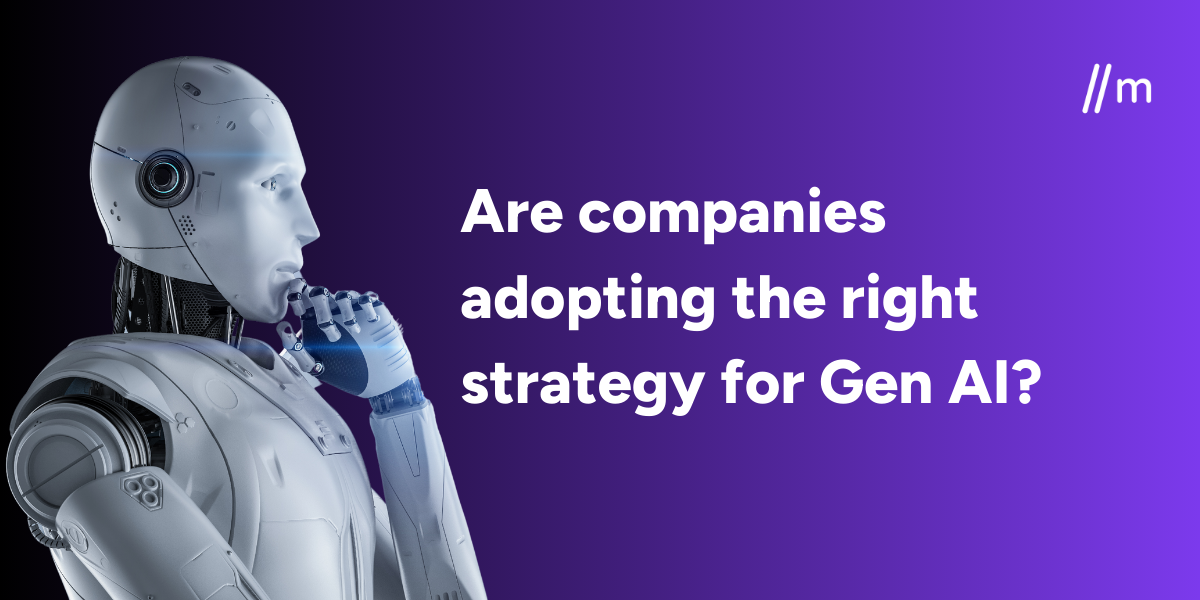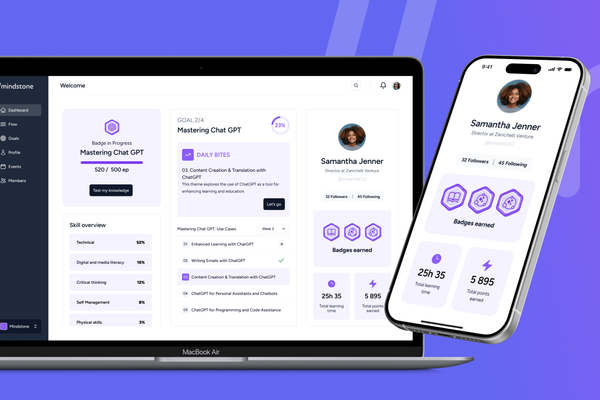How Human-Machine Teams Drive Success in the Age of AI
The future of business is human-machine collaboration. Without it, companies risk missing out on AI’s full potential for innovation and growth.

In today’s rapidly changing business environment, artificial intelligence (AI) is no longer just a tool; it’s becoming a vital partner in driving innovation and efficiency. But the real revolution isn’t about machines taking over jobs; it’s about AI working alongside humans to reshape the way we think about productivity and innovation.
Jonathan Gilmore, CEO of Fractal explained how AI’s role in business goes beyond automation at the Mindstone's London AI Meetup, demonstrating how human-machine collaboration is set to redefine the future of work.
Rethinking Work: Collaboration, Not Replacement
For years, the conversation around AI has been dominated by the fear of the robots taking our jobs.
In some way, this automation anxiety has not been completely unfounded with reports of some companies reducing personnel for work that is now done by AI this year. However, Gilmore and other experts like Stanford University's Behnam Tabrizi and NinjaTech AI's founder Babak Pahlavan suggest this is a short-sighted strategy and a narrow way to look at AI’s potential.
While machines handle high-volume data and routine processes with efficiency, evidence still suggests that AI does not consistently make better decisions than humans, particularly when it comes to complex judgments involving human factors.
As businesses increasingly adopt AI technologies, many are discovering that success is not simply about delegating tasks to machines or humans based on who can do it better. Instead, Jonathan Gilmore posits that navigating the future of work means learning how to surf the jagged frontier.
Originally coined by Ethan Mollick et al., a leading voice on AI’s impact on work, the jagged frontier is the shifting, uneven boundary where AI capabilities and human intervention intersect in ways that are more nuanced than a simple division of labor.
The AI ROI Gap: Why Businesses Aren’t Reaching Full Potential
Gilmore emphasizes that companies need to rethink their organizational structures to ensure that human and machine collaboration is fluid and dynamic.
If businesses want to surf the jagged frontier, they must move beyond traditional workflows and embrace adaptive systems that can seamlessly switch between human and AI leadership, depending on the task at hand.
However, successfully reengineering organizational design starts with a strong foundation of AI competency. Both employees and management must understand basic familiarity with AI tools as well as build a deep understanding of how AI fits into larger systems. This means understanding how AI transforms processes and rethinking the way teams work.
The Blueprint for Thriving Human-Machine Teams
Teams need to be educated not only on how to operate AI systems, but also on how to collaborate effectively with AI in real-time, identifying when AI outputs need refinement or when human oversight is necessary for tasks that involve complex decision-making.
As Gilmore suggests, companies cannot succeed with AI by simply adopting new tools. The key to thriving in the age of AI lies in redesigning the organization to foster human-machine collaboration and grounding that shift in comprehensive AI competency training.
By doing so, organizations will empower their teams to work alongside AI—not just as users of technology, but as strategic collaborators who understand how to harness AI’s potential to drive meaningful business outcomes.
This post was developed with the assistance of AI tools, which were used to streamline content creation and research.
Specifically, AI helped in summarizing key points, structure the narrative, and improve clarity. While human insight and strategy were essential in shaping the final narrative, AI played a key role in enhancing productivity and ensuring thorough coverage of the topic.
This collaborative process between human creativity and AI efficiency reflects the very themes discussed throughout the post.
Mindstone AI MeetUp: Discover the ideas, innovations, and practical insights that matter.







